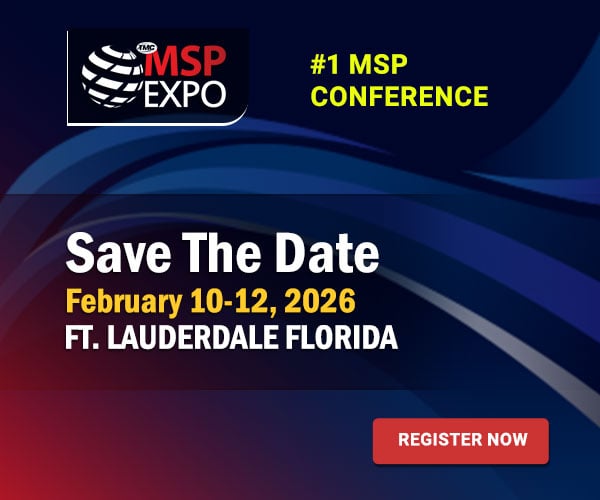
Managed Service Provider (MSP) business plans call for continuing and expanding subscription services revenue. Developing these services requires capital and new staff. It’s risky and can take a long time to be successful. This encourages the MSP to look for services they can resell. Does the MSP white label a service or sell a branded service? This was the topic of the well-attended panel I moderated at MSP Expo 2022 in June.
What to sell?
The MSP needs to look at the services that they already sell and look for gaps in their offerings. The MSP needs to look for services that their existing customers lack. Another question is what industry verticals does the MSP now support and what services would be attractive to those current customers? Are there potential customers the MSP could attract with new services? Candidate services can include VoIP, UCaaS, storage, cybersecurity, asset management, network management, VDI, and/or SD-WAN.
Definitions
A white-label solution is a service that can be rebranded and resold to your MSP customers as if it is your own product or service. In other words, a white-label service is developed by a service provider that can be rebranded and sold under an MSP’s name. White-label services are managed fulfillment services where a team from a service provider fulfills work for the clients of the MSP. These products services appear on the surface to be part of the MSP but, behind the scenes, they're offered by a service provider.
A branded solution is a service that has a known public brand name independent of the MSP. The branded service has an existing reputation that assures the quality performance of the service.
If there is a change to the white-label provider, the MSP customer can be isolated from the change. If additional services can be offered from a different white-label provider, the MSP can make the changes under their white-label offering without affecting the customer. On the other hand, changes to a branded solution will be much more evident to the MSP’s customer.
Why go this route?
The Forbes magazine article “Why A White Label Solution Is Easier Than Building Your Own” provides four reasons for considering a white-label or branded solution:
- Do not “reinvent the wheel, making mistakes that others before you have already made and mastered.”
- Do it yourself will “dramatically slow down your time to market, as you try to troubleshoot and increase your learning curve outside your core competency.”
- An MSP will “spend too much money developing tools and solutions that already exist in other formats.”
- The MSP may “miss out on resources and expertise in the specific space where you need a focused solution.”
Selection Questions
Most of these questions apply to both a white-label and branded solution.
- How long has the provider been in business with the service?
- What is their reputation for the service offered?
- What has been their growth in the past three years?
- What have the reviews been on social media?
- Is their financial position strong?
- Is an acquisition or merger on the horizon?
- Is the service focused on certain vertical markets or is it generic?
- Does the vertical market focus attract or discourage the MSP?
- What marketing support is offered?
The provider choice must also evaluate day-to-day operations.
- What sales support is offered?
- How fast and effectively does the provider respond to inquiries?
- Are multiple support channels available?
- Is there 24/7 sales and helpdesk support?
- Is the service easy to scale?
- Is the service easy to sell?
- What are the provider’s geographic limitations?
- Are there language limitations?
- Does the provider communicate regularly with the MSP?
The MSP must also evaluate the risks. Does the MSP have the staff to sell and support the service or does the MSP have hire new staff? Is there enough MSP capital to last until the service becomes profitable? Is the provider a risky partner? Is there a lot of competition from other MSPs selling this service?
A Service Level Agreement (SLA)
The SLA helps define responsibilities and liabilities between the MSP and the service provider. It should include a thorough definition of the reliability and availability of the service (inclusions and exceptions). The agreement should define the level of MSP expectations. Are the MSPs expectations unreasonable? What do they require, and can the provider meet those expectations? The SLA should include a section regarding performance management. White-label service agreements can include a section on profit potential.
Thinking through the Service Provider
A complementary session at MSP Expo “Partnering for Success: Why Choosing the Right Vendors is Key to MSP Success” explored the criteria that should be applied when selecting a service prover, white-label or branded.
As an MSP, you have choices when it comes to service provider partners. The service partners should deliver high-quality solutions and they must be profitable. Does the service partner provide other benefits as well? What kind of training and support do they provide? What about marketing and sales materials and tools? What about post implementation support, such as up-selling customers and troubleshooting?
Join us at MSP Expo 2023, February 14-17, 2023, in Fort Lauderdale, Florida, to continue these and other discussions about how MSPs can continue to capitalize on the growing trends that is seeing more and more businesses transition their IT to managed service providers.
Edited by
Erik Linask






